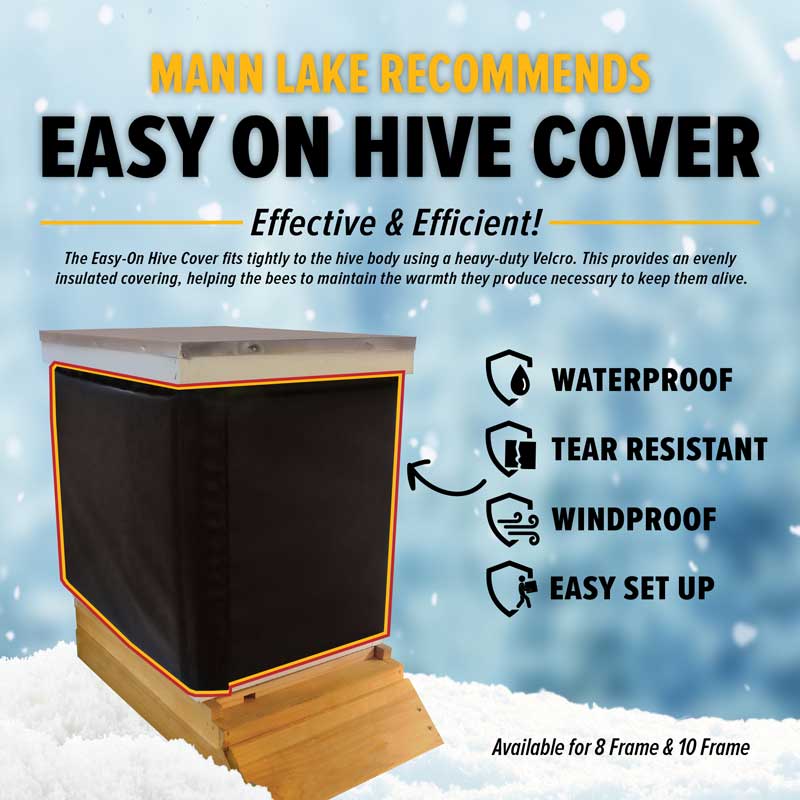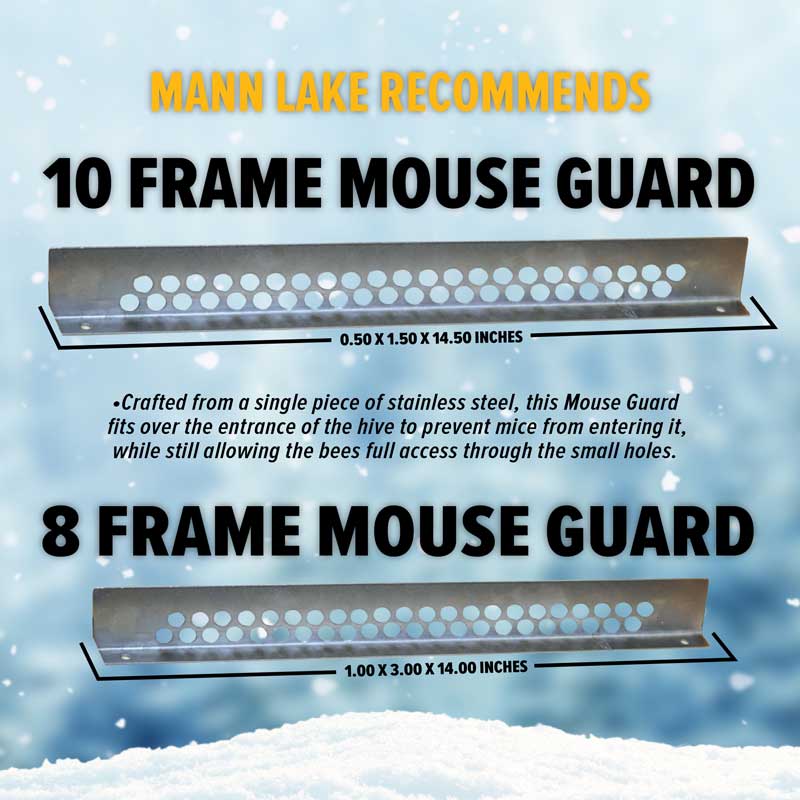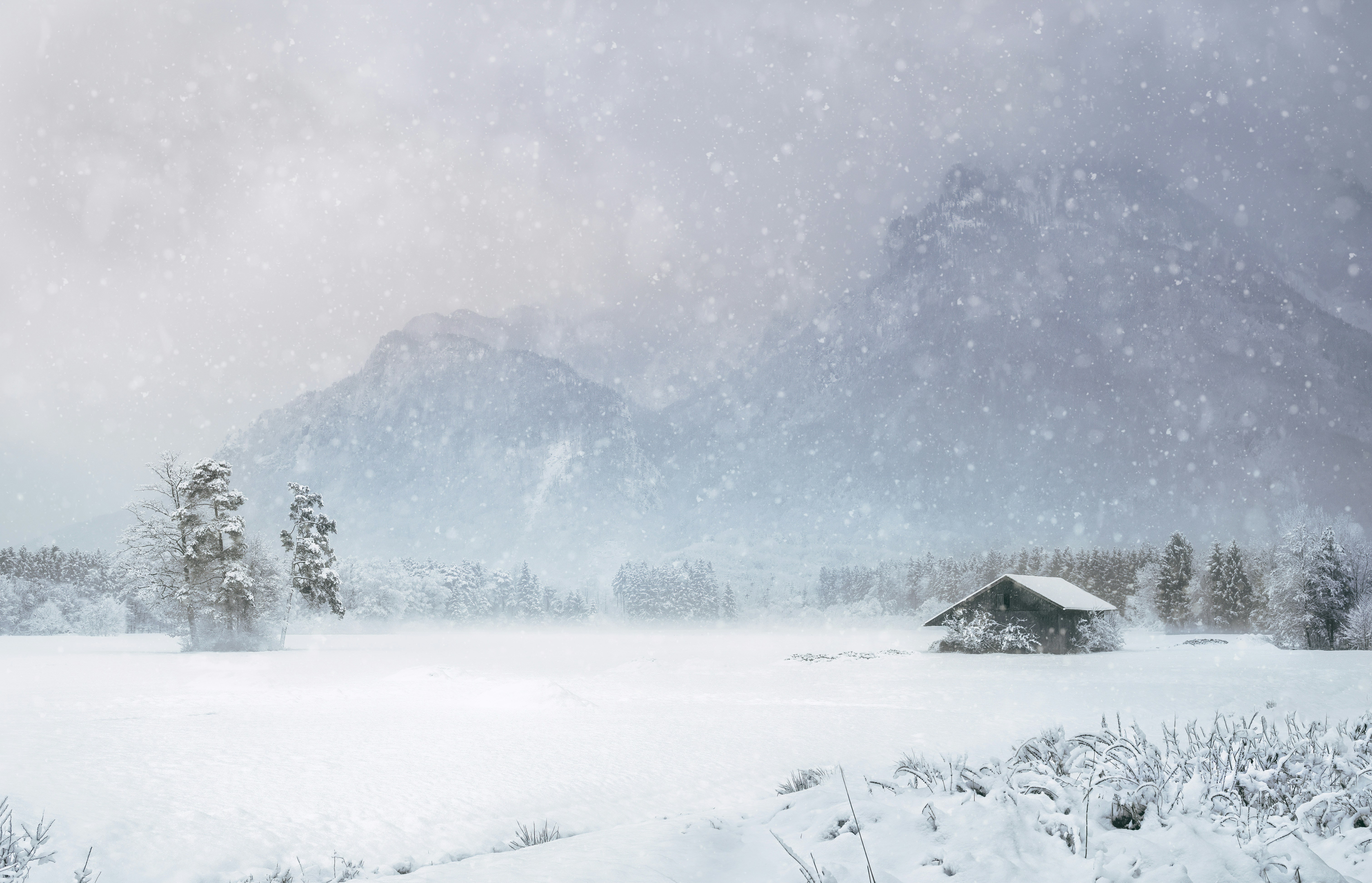Winterizing and Insulating Your Hive
Honey bees struggle throughout the winter months. The colony might lose a lot of members and become smaller due to the chilly, hard winds. However, beekeepers are still able to winter their honey bee colonies and have them reappear in the spring in tremendous strength. One approach to increase the likelihood of survival is to insulate hives.
There are important steps to help your bees make it through the winter. In places where you may frequently experience below-freezing conditions, insulating the beehive and maintaining a full hive of honey is vital. You won't need to winterize your hive if you reside in a warm area like Florida. Be aware that you might need to modify this information to account for your particular environment and location.
Insulate and Leave Honey for Your Bees
Beehive insulation can have two distinct benefits. Insulation plays a crucial role in improving a hive's overwintering odds and is especially beneficial when the hive has limited honey reserves. Bees located in a well-insulated hive get to consume less honey to generate heat, as insulation helps in maintaining a warmer interior.
This reduced honey consumption for warmth preservation not only saves the bees from starvation but also results in a larger quantity of honey available for harvesting in the spring. This occurs as honeycombs function as “thermal batteries.” They store heat during the day and gradually release it at night, which contributes to maintaining a stable temperature in the nest.
Easy On Hive Cover for Hive Protection

The Easy on Hive Cover is a waterproof and windproof wrap constructed with heavy tear-resistant marine-grade vinyl and foam board insulation. It helps keep your bees comfortable during the winter months. The cover fits tight onto hive bodies using heavy-duty Velcro and fits just under the hive lid so as not to block the hive opening or the top vent allowing moisture to escape.
No tools are needed. Simply hold the cover by the Velcro ends with the seem side up. Lift over the hive and adjust for placement. Then, press the Velcro strip to close. The cover can be stored flat and reused for years.
Benefits of Using Beehive Cover
Investing in a reliable beehive cover can offer invaluable benefits for your colony's health and survival. Here are some of the key benefits a beehive cover can contribute to your beekeeping journey
1. Preventing Condensation
Condensation that forms in the wintertime increases the risk of losing beehives. More losses occur during the winter than in other seasons for the honeybee colony in a beehive. Condensation water droplets have the ability to kill bees by chilling them. Using a hive cover significantly helps prevent condensation. Easy on Hive Cover has a top opening that allows ventilation and lets moisture escape.
2. Reducing Heat Loss
The beehive can retain more heat by being wrapped. In the chilly winter, the beehive's increased heat storage prevents water from freezing and producing droplets. The honey bee colony may maintain the beehive's temperature with a cover without exerting themselves excessively.
| Insider Insight: Use a thermal imaging device in extreme cold for optimal beehive insulation, and assist your bees in maintaining a stable, warm environment undisturbed. |
3. Warming the Hive
In certain regions, even winter days can bring powerful sunshine capable of warming the beehive. Utilizing dark-colored coverings can be beneficial on these warmer days, as they can absorb and retain heat, enhancing the external warmth of the hive. This insulation saves bees from expending energy to heat the hive themselves. It allows them to channel their efforts towards other essential hive activities.
4. Increasing Winter Survival Rate
The use of winter hive covers significantly enhances the beehive's survival chances during the colder months. Come spring, colonies from insulated hives tend to have larger populations, translating into increased foraging capabilities. This not only strengthens the colony but also ensures a more abundant output of hive products, setting the stage for a successful honey production season.
Secure Your Hive with a Mouse Guard

A mouse guard, crafted from a single piece of stainless steel, snugly fits over the hive entrance. This handy device thwarts mice from invading the hive while still permitting the bees to enter and exit through the small holes.
Mice are drawn to the warmth of the hive and the rich honey stores in winter. Their presence can cause severe damage to your hive, damaging the precious beeswax comb apart from depleting your honey reserves.
Besides defending against mice, a mouse guard can also help keep bees in the hive. This feature is useful, especially when relocating the hive or if the hive is near a field treated with pesticides. Placing the mouse guard with the small hole side down the night before moving or treating the field will keep the bees safe inside the ventilated hive.
Insulation Choices for Beehives
Choosing the right insulation material is important. The decision largely depends on the geographical location of the hive and the environment it will be subject to.
For a better understanding of which material suits your requirements, the table below shows a side-by-side comparison of the most widely used hive insulation materials.
| Material | Pros | Cons |
| Straw | Excellent insulator, renewable and biodegradable material | Challenges in availability and use, as it needs to be kept dry |
| Polystyrene | Good insulator, affordable, lightweight, and easy to handle | Can degrade over time, not as sustainable an option as others |
| Wood Fiber | Eco-friendly, good insulator, can come from sustainably managed forests | On the expensive side, can be harder to install than other options |
Remember, the type of bee, the hive's location, and the local weather conditions all need to be considered. This will help ensure your bees stay toasty warm during the harshest of winters and are in perfect health to produce plenty of honey once springtime arrives.
Impact of Weather Conditions on Hive Insulation

The adaptation of hive insulation to weather conditions is a critical aspect of successful beekeeping. Appropriate strategies during harsh or mild winters can significantly impact the health and productivity of your bee colony.
Insulation in Bone-Chilling Climates
In severely cold weather, insulation is crucial for trapping heat within the hive. The right insulation materials work as cozy winter jackets for your bee hives, providing a warm buffer against icy winds and cold air. Retaining internal heat enables the bee colony to survive the winter months and optimally utilize its energy reserves when spring kicks off.
Dealing with Moisture in Mild Winters
Where winters are milder, the insulation challenge leans more towards moisture management rather than freezing temperatures. Choose insulation materials that excel at wicking away condensation. By keeping the hive walls dry, you protect your bees from possible moisture-related risks, ensuring safety and comfort within the hive.
Understanding Local Weather Patterns
Gaining insights into your specific regional weather patterns is invaluable in choosing the right hive insulation. Know your highest and lowest temperatures, understand wind patterns, and be aware of humidity trends. A sound grasp of your local climate nuances helps tailor a more efficient and effective winterization strategy, equipping your beehives to maintain a healthy, productive colony irrespective of outside conditions.
Continual Assessment and Improvement
Monitor the overall health and productivity of your hive post-winter to evaluate the effectiveness of your insulation measures. This continuous assessment and willingness to improve carry the potential to make each subsequent winter less daunting and more productive for your bee colony. A personalized, informed, and adaptive approach is key to successful beekeeping in diverse climatic conditions.
The Role of Proper Ventilation
Proper ventilation is often an overlooked aspect of beekeeping, but it holds equal importance to insulating your hive. It may seem counterproductive to allow air to enter the hive during winter, but this airflow is essential to prevent moisture buildup. Without adequate ventilation, the warmth generated by the bees can condense on the hive's cold ceiling and walls, wetting and chilling the bees.
Good ventilation also aids in the natural regulation of the hive temperature and internal environment. This balance becomes especially crucial during milder winters when the bees remain relatively active, producing more body heat and moisture through their metabolic processes. Ventilation allows this excess heat and moisture to escape, preventing unwanted humidity inside the hive.
To enhance ventilation while insulating your hive, consider arrangements like upper entranceways or moisture-quilt boxes. It's a delicate balance between insulation and ventilation, as you aim to keep the hive warm without turning it into a moisture trap.
| Bee Smart: While creating hive ventilation, focus on upward airflow. Warm air rises naturally, and strategically placed vents can guide this hot, moist air out of the hive, maintaining a dry, healthier space for your bees. |
Harnessing Winter Resilience for Beehives
With strategic insulation, appropriate ventilation, and continual adjustments based on weather patterns, your beehives can effectively endure winter's harsh conditions. Every measure taken to protect your bees in cold temperatures plays a crucial role in promoting their health and productivity come springtime. Remember, understanding and responding to your unique environment is key to thriving in the journey of beekeeping, even in the face of challenging winters.

